20 easy meal prep ideas you can use, plus some tips to stock your pantry the right way
When you take the time to plan ahead, meal preparation takes no time at all. There's no need to get overly technical about meal prep, the idea is simple: by stocking your pantry strategically and doing a little bit of work ahead of the week, you'll be able to enjoy homecooked meals throughout the week, without the fuss.
The key is creating an efficient “real life” kitchen, a culinary workspace designed to simplify meal planning and preparation. Different strategies work for different lifestyles, so instead of a one-size-fits-all plan, I'm offering my 20 favorite, easy-to-incorporate tips and tactics that I've found have had a profound impact on my own dinnertime cooking.
Choose a few concepts, or try them all, here are 20 strategies for creating a well-appointed, perfectly functional kitchen and pantry that will make cooking a breeze.
1. Pre-chop your veggies
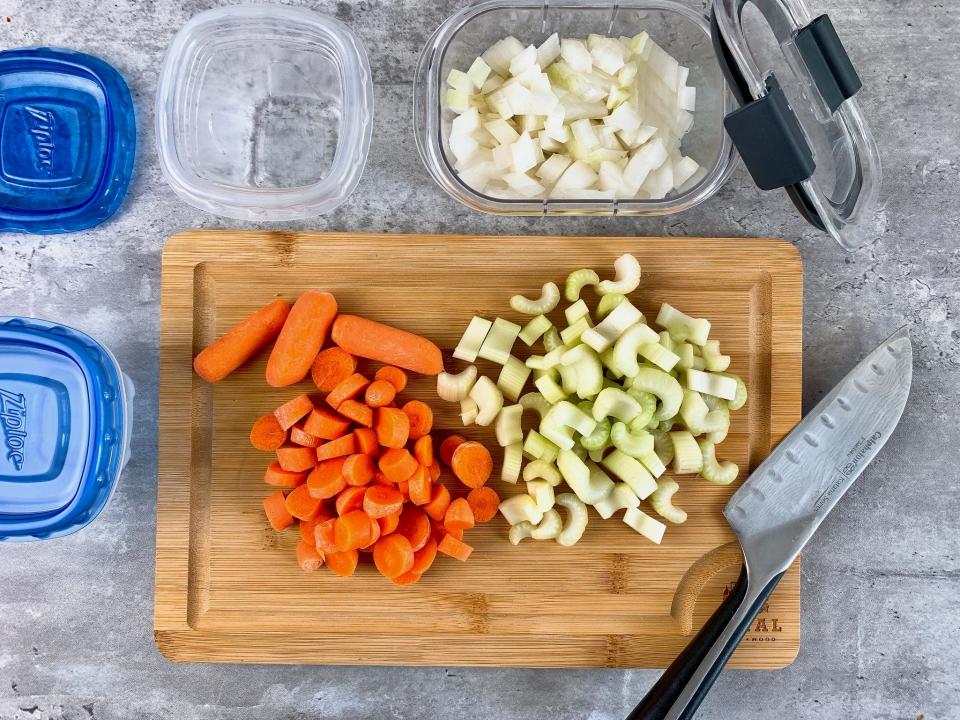
Many recipes for sauces, soups, stews, and chilies start with aromatics like onions, carrots, celery, bell peppers and garlic, which can be chopped in advance (up to 4 days). Pre-chop the vegetables you regularly use and refrigerate them in sealable containers or plastic bags until ready to use.
Time saved: This strategy can easily slash 15 to 20 minutes from your prep time.
2. Pre-mix your spice blends
Measuring out the spices for your favorite recipes takes time. If you have a few in rotation, measure out the spices you need ahead of time. You can even pre-measure internationally inspired spice blends and store them in containers or jars for up to six months. For an Italian medley, combine oregano, basil, thyme, rosemary and marjoram. For a Southwest mix, combine chili powder (regular or hot), cumin, cilantro and oregano. For an East Asian-inspired blend, combine garlic, sesame seeds, ginger and a pinch of cinnamon. For an all-purpose Mediterranean seasoning, combine parsley, oregano, basil, fennel, dill, cumin and paprika.
Time saved: This strategy can save at least five minutes, especially when you have to look up the recipe.
3. Make extra sauce
When making sauces and marinades, double or triple the recipe and reserve leftovers for future meals. Store sauces and marinades in sealable containers or freezer bags and they will last up to five days in the refrigerator, or up to three months in the freezer. Your “future self” will thank you for having comforting, homemade sauces and marinades on hand, especially on busy weeknights.
Great examples include pasta sauce, meat sauce, gravies, Asian glazes and marinades for chicken, steak, pork, and seafood.
Time saved: This strategy can cut your entire meal preparation time down zero. Simply defrost and go.
4. Double your dishes
When making casseroles, prepare two instead of one. For example, if you have all the ingredients out and ready for lasagna, assemble two complete casseroles and freeze the second one (before baking) for up to three months. Thaw frozen casseroles overnight in the refrigerator and then bake as directed. This works will all types of casseroles from the classic tuna noodle to enchiladas.
Time saved: This strategy can cut your entire meal preparation time down zero. Simply defrost and bake.
5. Cook some chicken
Cooked chicken is a quick cook’s best friend and will last up to 4 days in the refrigerator and 3 months in the freezer. When roasting chicken breasts, tenders or thighs, double the amount and reserve the leftovers for another night.
What should you do with the leftover chicken? The possibilities are endless — chicken fried rice, chicken burritos, pizza with chicken and vegetables, chicken salad, chicken Caesar wraps and practically any casserole that calls for cooked poultry.
Time saved: Starting with cooked chicken (made ultra-flavorful by roasting), you’ll shed at least 15 to 20 minutes from your meal prep time.
6. Freeze individual portions
How many times have you opened your freezer, wishing you had something to serve two people, when all you have is a casserole big enough to serve six? That's why I like to freeze individual portions of leftovers, not just entire casseroles. When you freeze in smaller portions, thawing is quicker (and safer) and you can serve one or two people with ease.
Time saved: This strategy can cut your entire meal preparation time down zero. Simply microwave.
7. Label and date everything
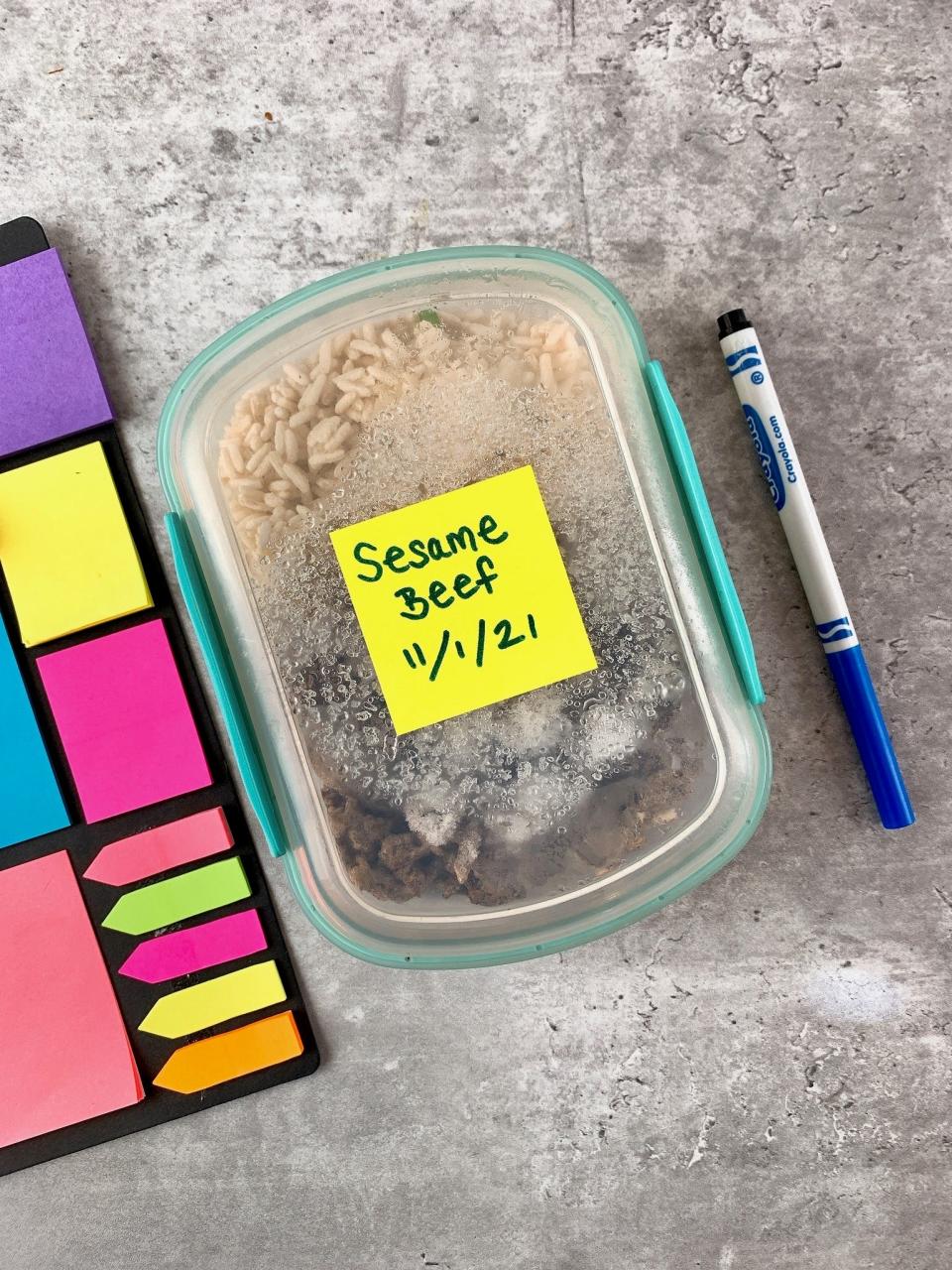
No more mystery food in the icebox! When packing up food for the freezer, add the description and date. Although you think you might remember the contents, once food is frozen, it’s hard to decipher what it is. Try to thaw and enjoy all frozen food within three months (this is a food quality tip, not a food safety issue).
Time saved: This strategy will save you from the dreaded frozen mystery meals, which often end up in the bin.
8. Bottled dressings are a secret weapon
Bottled dressings and vinaigrettes are typically crammed with flavorful ingredients, including robust vinegars, mustards, oils, herbs and spices. Take advantage of this one-stop-flavor-shop and consider using them as the base of your sauces and marinades.
Time saved: Using bottled vinaigrette as your base, you can shed 10 minutes of chopping, measuring and whisking from your meal prep time.
9. Make your condiments do double-duty
Just like dressings and vinaigrettes, chutneys, relishes, pesto, miso paste, and other condiments can be amazing time-savers on a busy weeknight. You can either use these flavorful pantry staples as the base of your sauces and marinades, or use them as quick-and-easy toppings/garnishes just before serving.
Time saved: Using condiments as your finishing touch, you can shed five to 10 minutes of chopping, measuring and whisking from your meal prep time.
The powerful potential of mustard: How to use the condiment as an ingredient instead
10. Load up on canned tomatoes of all kinds
Canned tomatoes might be one of the most important ingredients in your pantry arsenal. They come in a variety of forms and can be used in sauces, soups, stews, salads and more. I like to keep cans of regular, fire-roasted, seasoned, diced, pureed, crushed, green chili laced and sauced tomatoes that can be added straight to recipes. No chopping is required.
Time saved: Using canned tomatoes can save five to 10 minutes of chopping and seasoning.
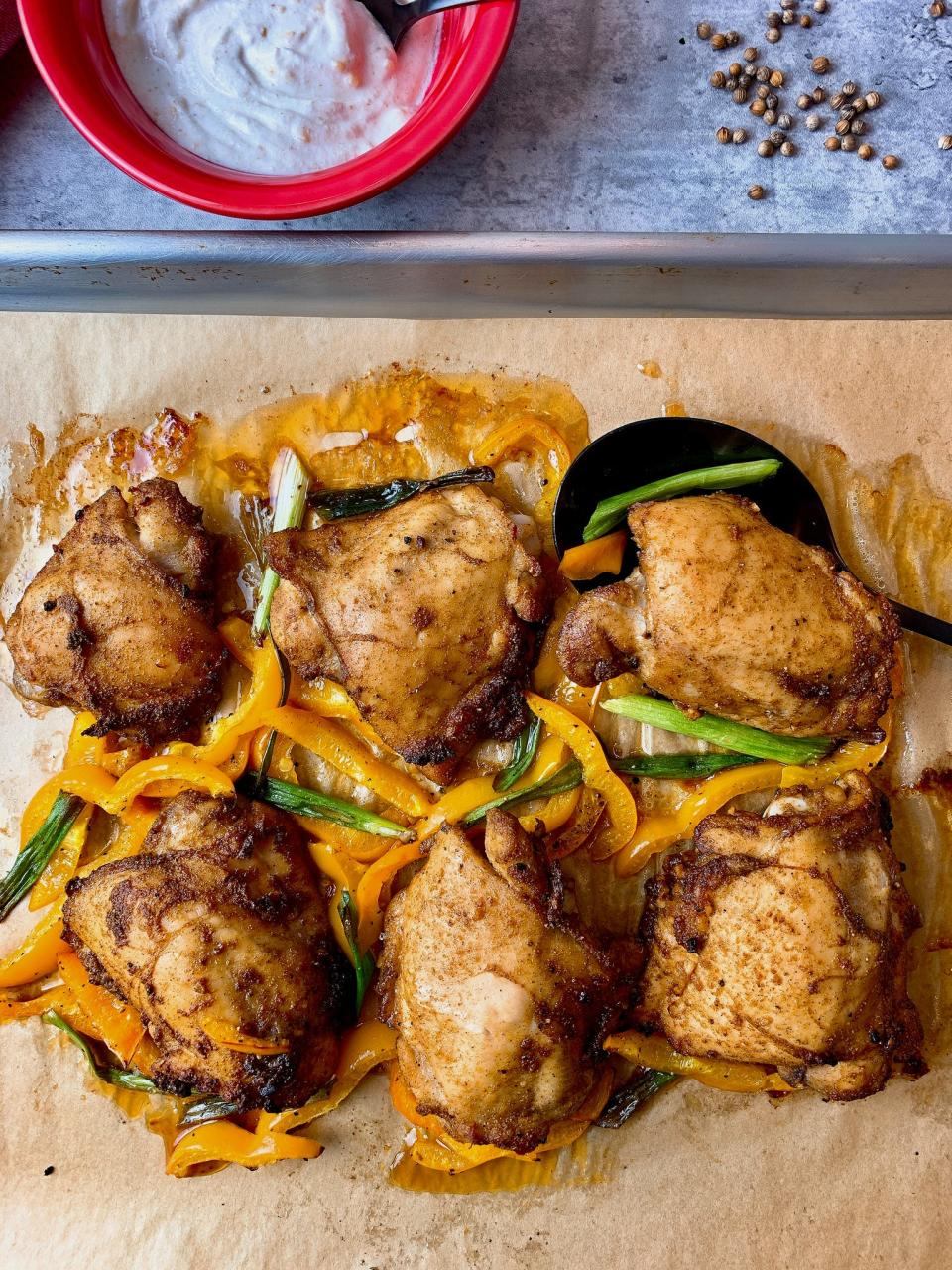
11. Pre-marinate your chicken
Using one of your handy pre-measured spice blends or pre-bottled dressing, add a chicken breast, spices, salt and little olive oil or the pre-made dressing to a zip-keep bag. Massage to distribute the spices and oil and then throw the bag in the freezer for up to three months. When you're ready for dinner, simply take the chicken directly from the freezer to the oven or grill. To shorten your cooking time, remove a bag of frozen chicken the night before and allow to defrost in the fridge overnight. The chicken will continue to absorb the spices while it defrosts.
Time saved: This is a grab-and-go option with no prep time. Simply grill or bake.
12. Pre-shred that cheese
Keeping some shredded cheese on hand for ultra-busy weeknights is a lifesaver. You can buy pre-shredded cheese, but the convenience item is often pricier than cheese sold whole. An alternative is to buy a block of cheese and shred it yourself, keeping it in airtight containers or plastic bags to use at a moment's notice.
Time saved: A few minutes of shredding (plus washing your grater).
13. Broths and bouillon are instant flavor boosters
If you want the cooked-all-day savory flavors of a stock, whether for a soup, stew, sauce or gravy, ready-to-use broths, bouillon cubes and jarred bouillon can step in with a boost of flavor on demand. Once open, liquid broths have a limited shelf-life (in the refrigerator), so keep the cubes on hand as a back-up.
Time saved: If subbing in for homemade stock, this will save hours.
14. Stock up on quick-cooking grains
Fast-cooking grains like rice, quinoa and couscous not only make excellent side dishes, but they can also become the base of wholesome, complete meals when topped with a protein or one of your freezer sauces.
Time saved: Most quick-cook grains take only around 10 minutes to cook.
15. Wash herbs as soon as you get home from the grocery store
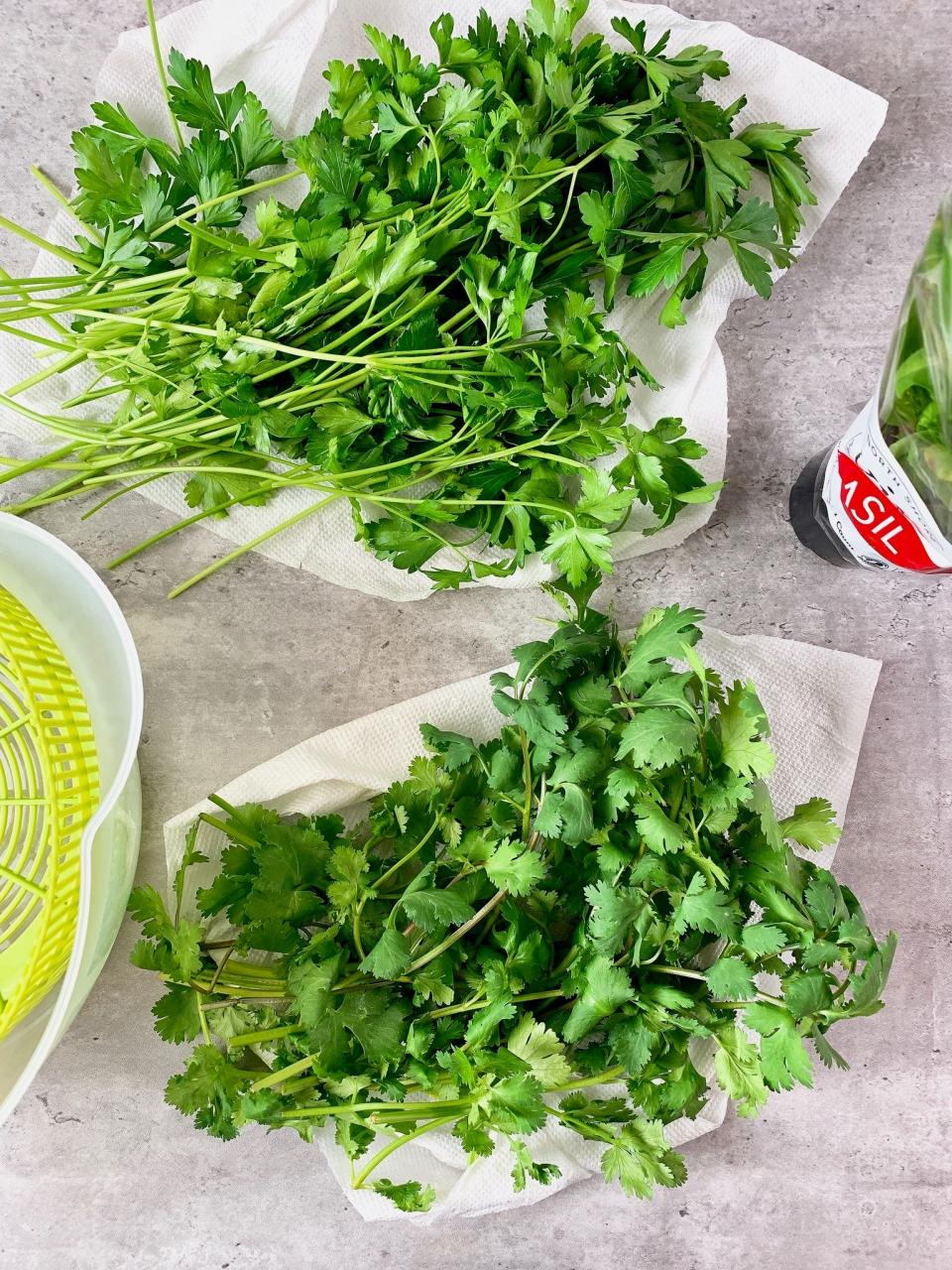
This might not be your favorite tip (adding more work to your to-do list as you unpack the groceries), but trust me. Fresh herbs are often used at the end of cooking, just before serving, a time when you’re hustling to get to the table. Being able to grab pre-washed herbs and give them a quick chop (or simply pull off some leaves) is an excellent time-saver. As a bonus, the herbs will keep longer when washed, dried and stored in a container lined with a paper towel. You’ll thank me later for this one.
Time saved: Having pre-washed herbs at the ready offers instant gratification.
16. Freeze your fruit
Don’t let your berries get past their prime. Fresh berries are a wonderful addition to all types of dishes, from your morning cereal to dinner salads and sweet desserts. But they don’t last very long! Before they “turn the corner” and become inedible, give fresh berries a rinse under cold water and spread them out on a baking sheet to freeze. For bananas, simply peel them and add them to the baking sheet. Once frozen, store the fruit in freezer bags and use it in smoothies, muffins, quick breads and other baked treats.
Time saved: Having washed, frozen fruit at the ready offers instant gratification.
17. Cook bacon in advance
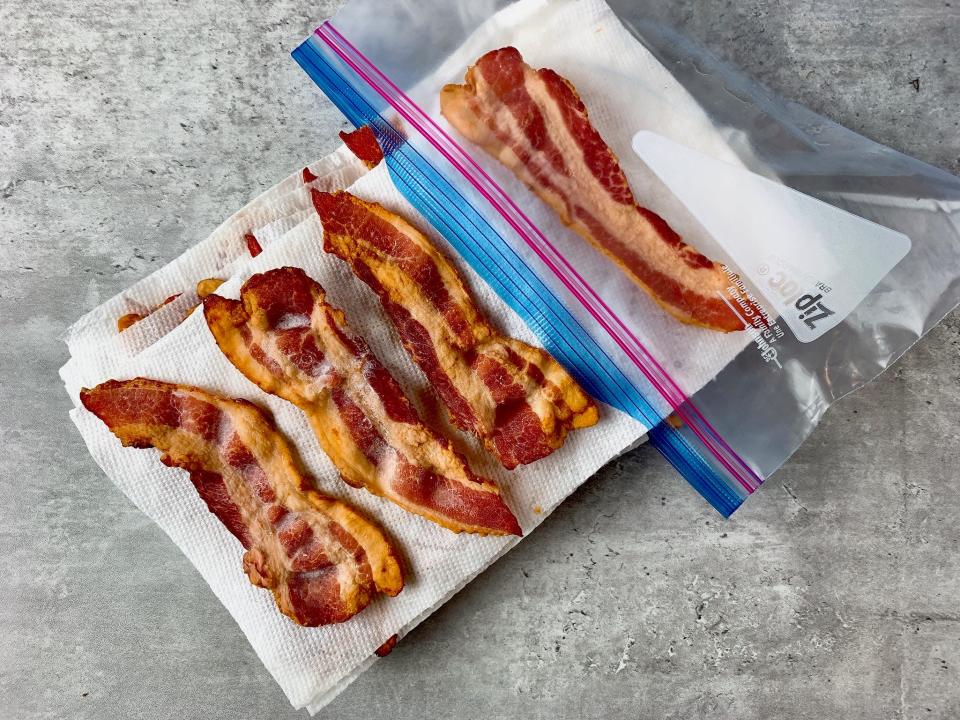
There are many reasons this is an awesome tip. First, you can roast an entire package of bacon in just minutes and dodge a stove-top full of grease. Second, you’ll always have cooked bacon nearby to crumble over a salad or toss into a casserole.
To roast bacon, arrange the strips on a parchment-lined baking sheet in a single layer. Roast at 400 F for 12 to 15 minutes, or until chewy-crisp. Blot the bacon with paper towels and freeze in a freezer bag for up to three months. When you’re ready for bacon, pull out as many slices as you need and reheat (without thawing) in the microwave for a minute or in a 300 F oven for five minutes.
Time saved: At least five to 10 minutes of frying and cleanup.
18. Fill a shelf with canned beans
In case you haven’t noticed, the canned bean section of the grocery store have gotten even better over the last few years. Not only can you find traditional canned beans of all colors (black, white, red, pink and navy), you can find tender legumes swimming in seasoned sauces that are great for stews, soups, chilies and even nachos (think refried beans with jalapeño, lime and cilantro). And when it comes to stretching meals, canned beans are your huckleberry – they’re filling, affordable, and rich in protein and fiber.
Time saved: Using a can of beans as your protein requires nothing more than a can opener, which can save you all the prep time of cooking meat, at least 10-20 minutes.
19. Defrost overnight in the fridge
Rather than defrosting on the counter or in the microwave, the safest way to defrost your meals or meats is by leaving it in the fridge overnight. In absolute dire situations (when you need to thaw food fast), you can use a cold-water bath for 30 minutes. This speeds the thawing process for most frozen items – from chicken breasts, to ground beef, to frozen seafood. For casseroles, make sure the water doesn’t come more than halfway up the sides of the baking dish.
Time saved: This tip is less about saving time and more about food safety! But taking tomorrow's dinner out of the freezer and putting it in the fridge takes seconds and will protect the integrity of the dish.
20. Embrace sheet pan cooking
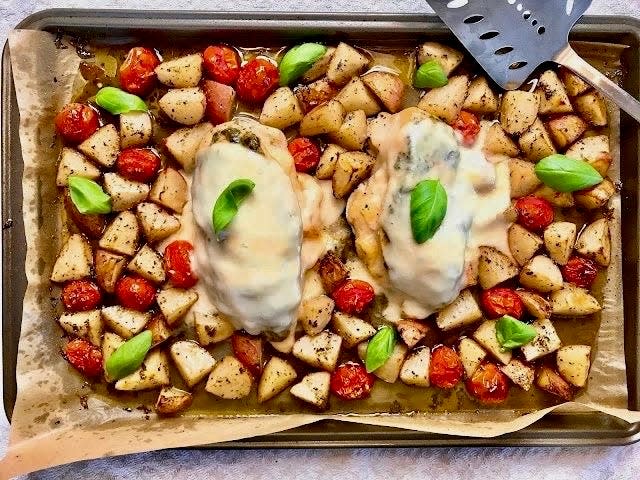
One-pan meals are a busy cook’s pal in the kitchen. And sheet pan meals require no “hands on” work once the pan is in the oven (versus stove-top meals that require regular stirring). Plus, if you’ve incorporated some of the other tips from this list, like pre-chopping vegetables, using dressings as marinades and washing herbs before storing, making dinner could be a totally pre-free matter of throwing some ingredients on a pan and popping it in the oven.
Pro-tip: you can cook your fish and chicken from frozen, simply adjust cooking time to ensure the protein is cooked through.
Time saved: This strategy can cut your entire meal preparation time down zero. Simply bake.
This article originally appeared on Arizona Republic: Meal prep ideas: Tips and strategies for stocking your pantry

